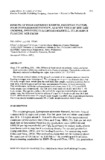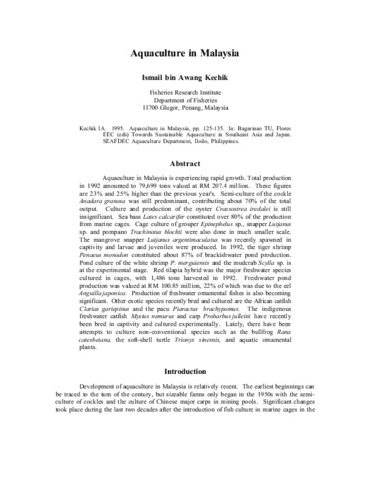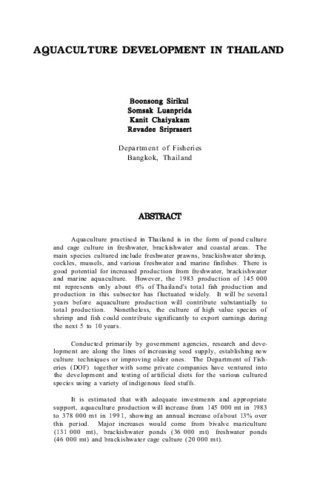Effects of food ration on growth, condition factor, food conversion efficiency, and net yield of estuary grouper, Epinephelus salmoides Maxwell, cultured in floating net-cages
Share
Abstract
The effects of food ration on the growth and yield of the estuary grouper raised in floating net-cages were investigated. The optimum ration given on alternate days was 5% body weight (wet) which gave the best mean fish weight, uniform condition factor with time, relatively good survival rate, and greatest efficiency of food conversion. The maintenance, optimum and maximum food rations were 1.41, 5.75, and 9.0% body weight (wet) respectively. The fish were more uniform in size when fed 5-8% body weight. Though the yields at the end of the experiment were higher with high ration rates, the difference between rations of 5 and 9.1% body weight was 26.8 and 33.6%, whilst that between 5% and 2% body weight was 596%. For economic production, the ration should be approximately 5% of body weight supplied every 2 days.
Suggested Citation
Chua, T.-E., & Teng, S.-K. (1982). Effects of food ration on growth, condition factor, food conversion efficiency, and net yield of estuary grouper, Epinephelus salmoides Maxwell, cultured in floating net-cages. Aquaculture , 27(3), 273-283. https://doi.org/10.1016/0044-8486(82)90062-X
Subject
Taxonomic term
Collections
- AQD Journal Articles [1249]
Related items
Showing items related by title, author, creator and subject.
-
Aquaculture in Malaysia
Kechik, Ismail bin Awang. (Aquaculture Department, Southeast Asian Fisheries Development Center, 1995)Aquaculture in Malaysia is experiencing rapid growth. Total production in 1992 amounted to 79,699 tons valued at RM 207.4 million. These figures are 23% and 25% higher than the previous year's. Semi-culture of the cockle ... -
Coastal aquaculture in Thailand
Sahavacharin, Songchai (Aquaculture Department, Southeast Asian Fisheries Development Center, 1995)Coastal aquaculture in Thailand has expanded rapidly in both area and production in the last decade. The important cultured species are the shrimps (Penaeus monodon and P. merguiensis), sea bass Lates calcarifer, groupers ... -
Aquaculture development in Thailand
Sirikul, Boonsong; Luanprida, Somsak; Chaiyakam, Kanit; Sriprasert, Revadee (Aquaculture Department, Southeast Asian Fisheries Development Center, 1988)Aquaculture practised in Thailand is in the form of pond culture and cage culture in freshwater, brackishwater and coastal areas. The main species cultured include freshwater prawns, brackishwater shrimp, cockles, mussels, ...




